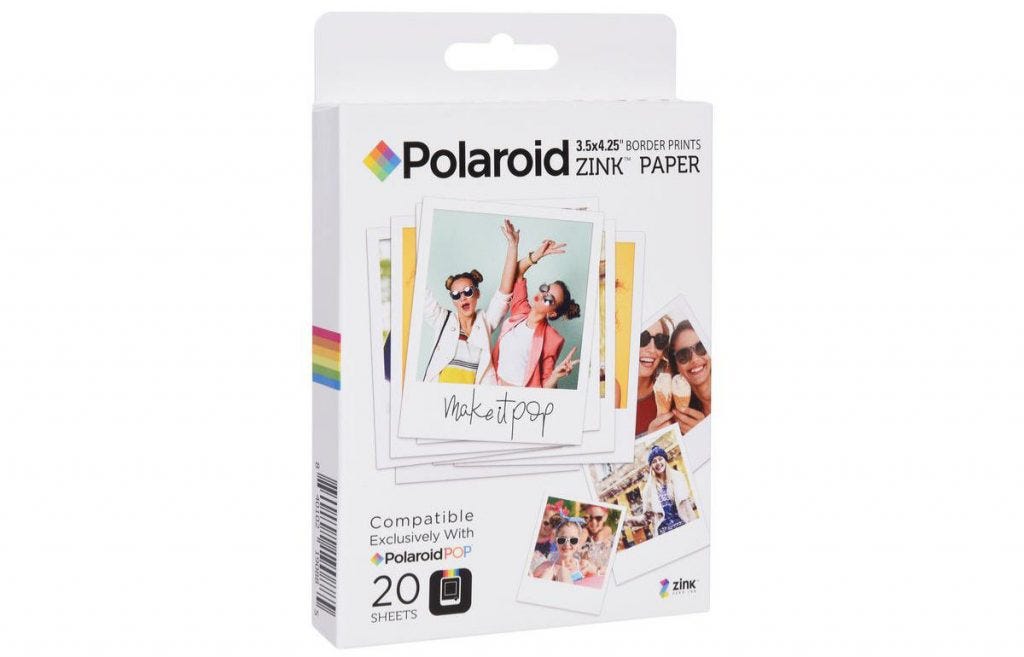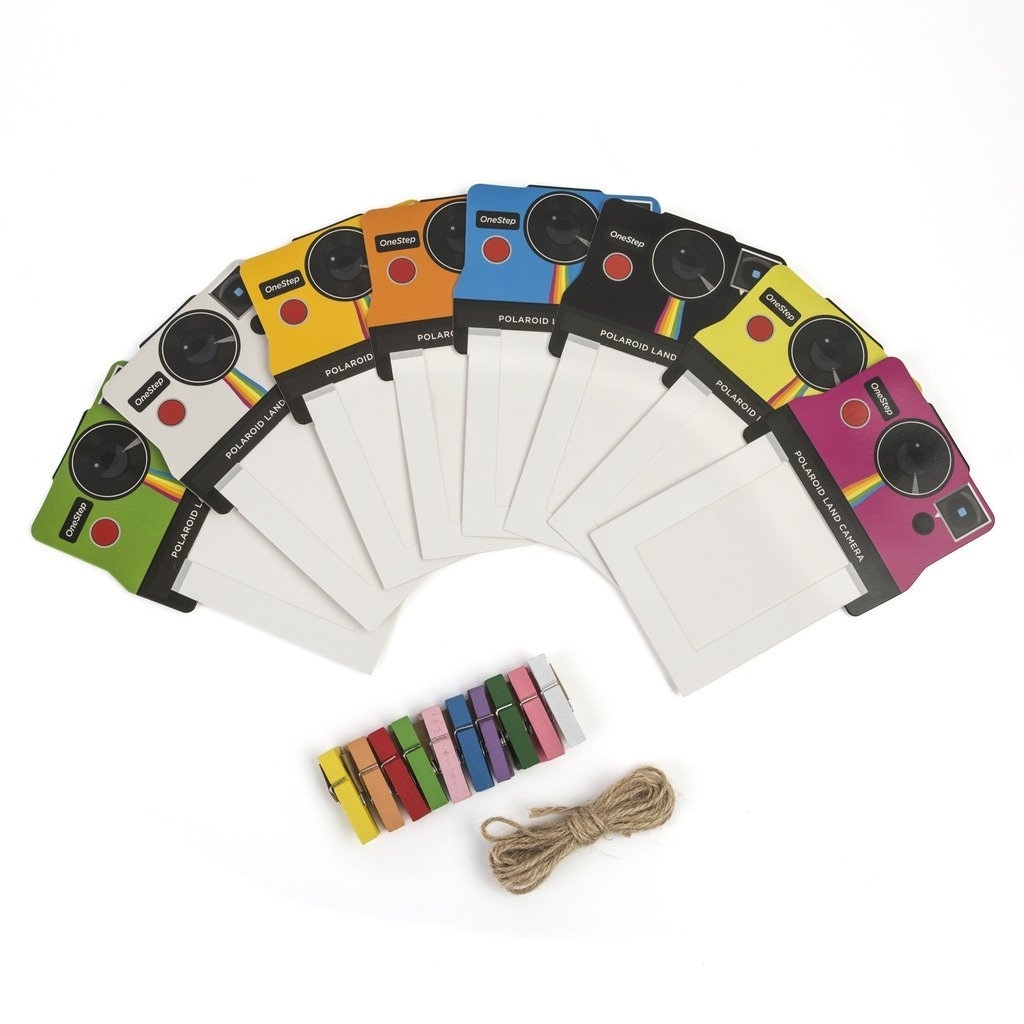Polaroid snap paper.


Polaroid Snap camera can print snaphots instantly using inkless paper

Possible reasons why there is a jam could be: more than ten sheets of paper, bent paper, and backwards paper. It can create a 2x3 inch photo in just under a minute using specially developed paper. Each photo takes roughly 30 seconds to print out. More from NerdWallet Courtney Jespersen is a staff writer at NerdWallet, a personal finance website. Each new pack requires you to go through the process of inserting and ejecting the blue piece of card before using new paper. The new Polaroid Snap camera attempts to recapture the fun of instant photography, but with a modern, digital twist. This first becomes apparent with the magnetic lens cap, which handily snaps see what they did there? There are no other controls and the flash is automatic.
Polaroid Snap Instant Digital Camera review: On

Film options at the end of the article. The Z2300 had one, but considering how awful it was, it's probably for the better that Ammunition and Polaroid left it a screen out on the Snap to keep the design compact and the price low. Yeah, homepage I know, it sounds corny and cheesy, but it's true. The traditional film produces good results and the camera is simple to use. But consumer photography began to decline in the 1980s. The Mini 90 is great for both portrait and landscape photos as it has 2 shutter release buttons.
A Polaroid Snap Instant Digital Camera Review Won't Answer These 105 Q

What Polaroid -- or, more appropriately Polaroid licensee -- has done is create a camera that's part-past, part-present, and small and light enough that you won't think twice about taking it along on your next adventure to a party or wedding, or just out into your backyard. You can switch between normal color, black and white and sepia. This may solve the issue. The result is full-color, high quality, long-lasting and smudge-proof images without ink cartridges, ribbons or toner. Seeing what mine does, my little boy is keen to pinch my camera…way too precious and expensive in film for all his identical shots of feet, knees toys and radiators! If that's your main concern -- a camera that's better than your phone -- stop reading and go. Mini camera is an image of failure the possibility of getting big. The pocketable camera also features a pop-up optical viewfinder for composing images that is used to turn the camera on and off.
Polaroid Snap vs. Fujifilm Instax Mini 8

Get the truth from people who own a Polaroid Snap Instant Digital Camera, including the fact that it won't. The result is full-colour, high quality, long-lasting and smudge-proof images without ink cartridges, ribbons or toner. The camera may be freezing up and just generally not operating in a proper manner, this may be due to out of date firmware. Loading Paper Paper is loaded via a door on the rear of the camera, and for younger kids this would best be done by an adult. Simply push down a switch to open hatch on the back of the camera.
Polaroid Snap camera can print snaphots instantly using inkless paper

You can now safely reload Turning Off focus for every photo. The 2X3 inch photo prints in just under a minute so consumers can instantly share the photo with their friends and family. Let's get one urgently important item out of the way, however: Polaroid Snap requires an immediate firmware update to prevent it from accidentally printing pictures taken with the lens cap on. Simple look, simple operation The Snap is slightly larger than the Zip Instant Photoprinter, which is to say it's roughly the size of a portable external hard drive, and can easily fit into your pocket. The Polaroid Snap works with. If an image does not print after immediately taking a picture and you have confirmed it is not one of the above symptoms, you may have the wrong paper.
Polaroid Snap or Fuji Instax? Best Instant Camera For Kids

Also, they are smudge, tear, and water resistant and dry instantly for handling right away. Discuss: Polaroid Snap Instant Digital Camera review: On-demand photo nostalgia for people who barely remember instant cameras Sign in to comment Be respectful, keep it civil and stay on topic. The photo booth app can take six pictures in only ten seconds. The camera's Fisher-Price design may turn some people off, but I like the simplicity. The Bottom Line The Polaroid Snap is an instant camera that's equal parts past and present, with a nostalgic trick -- printing actual photos -- that your phone's camera can't duplicate. Also, the back peels off to become a sticker! Likewise, the digital photos can't compete with a decent phone camera. To the right of the color button is a border button that adds a white frame around photos; this is great for when you want to write a message on a photo.
Polaroid Snap prints photos as stickers in 35 seconds [REVIEW]

Additional noteworthy features include an option to print pictures with the Polaroid Classic Border Logo and a photo booth mode, which can take six rapid-succession pictures within 10 seconds. The Polaroid Snap has a 10 million pixel sensor, and a fixed length lens. Loading Film Film comes in a small cartridge of 10 with a cover sheet which makes loading very easy. It's absolutely easy and fun to use. You can still take a photo when the printer is printing, with the resulting image printing out once the first one has been ejected. Hello everyone and thanks for this troubleshoot page.
Polaroid Snap

The photos are smaller than the Polaroid Snap and it is fairly large and chunky. The packs come up with a blue sheet of card which must be inserted into the camera along with the pack. Front of the Polaroid Snap To switch the camera on, you need to push down the pop up viewfinder - the camera should turn on automatically when you do this. It naturally takes photos in portrait and the photo ejects out of the top. Next to that, there's a button that will add that classic Polaroid border to your print, and next to the shutter release there's a 10-second self-timer so you can get in your photo a tripod mount is on the bottom. During extended use, your Polaroid Snap Interference Statement — Increase the separation between the equipment camera may feel warm to the touch.
Polaroid Snap Touch

And on the bottom is a standard tripod mount. There is no screen to frame your shot, but instead a small pop-up viewfinder on top that also turns the camera on. To turn on the camera, pop up the viewfinder. You can see the difference here sitting next to my Instax Mini 90. What you see through the viewfinder depends where your eye is, which might be different to what the lens is looking at.
UNDER MAINTENANCE